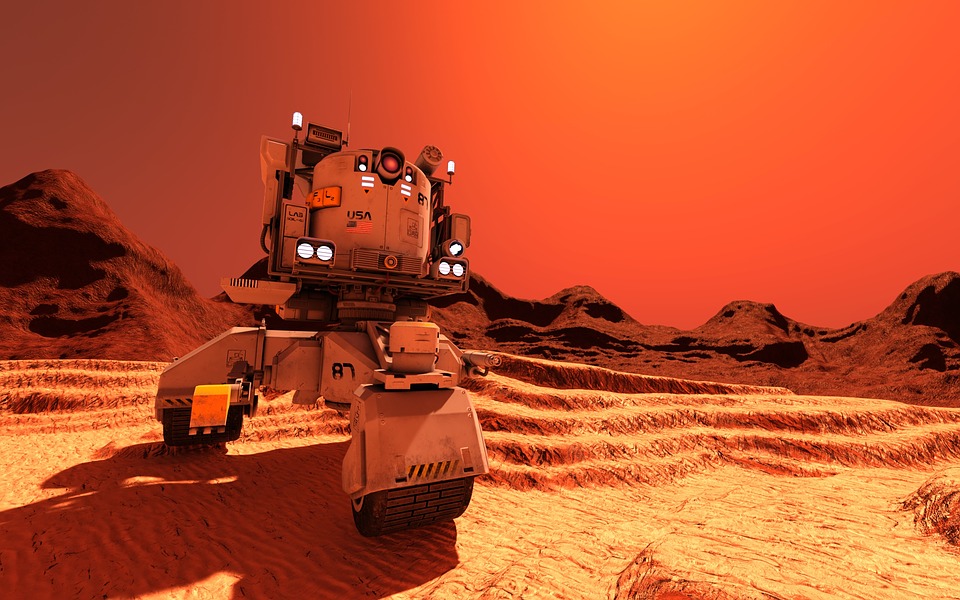NASA and other space agencies all over the world are also preparing for the upcoming missions to Mars. However, following the US’ successful ending of the Space Race against the Soviet Union, it was revealed that they made an unsuccessful proposal to colonize the red planet decades ago.
YouTube Channel DarkDocs revealed that the Soviet Union once had plans to get to Mars following the historic Apollo 11 mission that brought the first men on the Moon. In the channel’s series “Secret Failed Soviet Moon Landing,” the Kremlin was still determined to outdo Washington in terms of space exploration even after the success of Apollo 11. Aerospace engineer Mikhail Tikhonravov proposed the Soviet’s human mission to Mars called the Martian Piloted Complex or MPK.
Tikhonravov’s plan involved an N-1 launcher that had yet to be tested in order to put together a nuclear-powered spacecraft into the Earth’s orbit. The spacecraft would then propel itself with the use of electric-reactive engines powered by a nuclear generator. However, despite the ambitious plans presented, it was ultimately unsuccessful. All four attempts to launch the N-1 failed, the second of which resulted in the vehicle crashing to its launch pad shortly after liftoff. The crash caused one of the largest artificial non-nuclear explosions.
“Some of their plans were fantastically ambitious,” said the narration. “One or more of the outrageous proposals was a plan to get a six-man team to land on Mars and live there for a year. These cosmonauts could then assemble a nuclear-powered train in which to traverse and explore the Red Planet. 11 men and 14 dogs died in Russian tests for the Mars mission.”
One of the goals that space agencies have in their upcoming Mars missions is to search for signs of life. It is long believed that bodies of water once existed on what is now a dry neighboring planet. A study suggests that life on Mars may still be existing under the surface or at least proof of life.
Previous studies of the Red Planet found that these bodies of water and glaciers existed between 4.1 and 3.7 billion years ago. This was known as the Noachian period. Over time and as temperatures changed causing the ice on Martian glaciers to melt, the remnants of ice may have melted into the surface.



 Astronomers have discovered another puzzling interstellar object − this third one is big, bright and fast
Astronomers have discovered another puzzling interstellar object − this third one is big, bright and fast  Neuralink Expands Brain Implant Trials with 12 Global Patients
Neuralink Expands Brain Implant Trials with 12 Global Patients  Kennedy Sets September Deadline to Uncover Autism Causes Amid Controversy
Kennedy Sets September Deadline to Uncover Autism Causes Amid Controversy  NASA Astronauts Wilmore and Williams Recover After Boeing Starliner Delay
NASA Astronauts Wilmore and Williams Recover After Boeing Starliner Delay  Trump Administration to Launch Autism Initiatives Targeting Acetaminophen Use and New Treatment Options
Trump Administration to Launch Autism Initiatives Targeting Acetaminophen Use and New Treatment Options  Blue Origin’s New Glenn Achieves Breakthrough Success With First NASA Mission
Blue Origin’s New Glenn Achieves Breakthrough Success With First NASA Mission  Ancient Mars may have had a carbon cycle − a new study suggests the red planet may have once been warmer, wetter and more favorable for life
Ancient Mars may have had a carbon cycle − a new study suggests the red planet may have once been warmer, wetter and more favorable for life  NASA Faces Major Workforce Reduction as 20% of Employees Prepare to Leave
NASA Faces Major Workforce Reduction as 20% of Employees Prepare to Leave  Is space worth the cost? Accounting experts say its value can’t be found in spreadsheets
Is space worth the cost? Accounting experts say its value can’t be found in spreadsheets  FDA Adds Fatal Risk Warning to J&J and Legend Biotech’s Carvykti Cancer Therapy
FDA Adds Fatal Risk Warning to J&J and Legend Biotech’s Carvykti Cancer Therapy  SpaceX’s Starship Completes 11th Test Flight, Paving Way for Moon and Mars Missions
SpaceX’s Starship Completes 11th Test Flight, Paving Way for Moon and Mars Missions  SpaceX Starship Test Flight Reaches New Heights but Ends in Setback
SpaceX Starship Test Flight Reaches New Heights but Ends in Setback  Lost in space: MethaneSat failed just as NZ was to take over mission control – here’s what we need to know now
Lost in space: MethaneSat failed just as NZ was to take over mission control – here’s what we need to know now  Tabletop particle accelerator could transform medicine and materials science
Tabletop particle accelerator could transform medicine and materials science 































